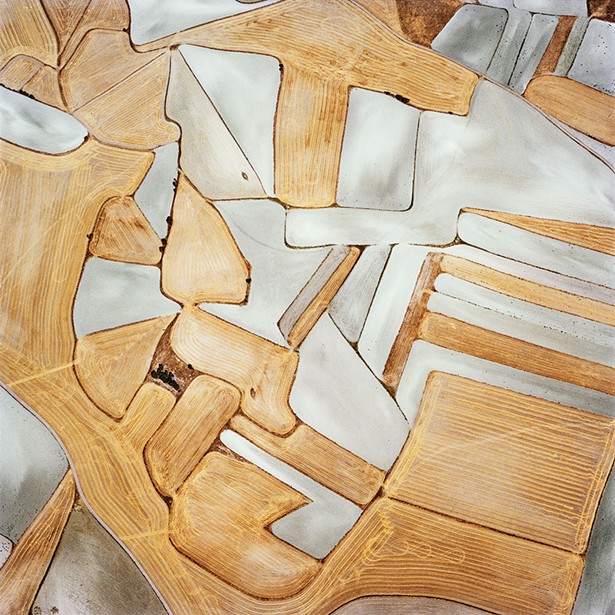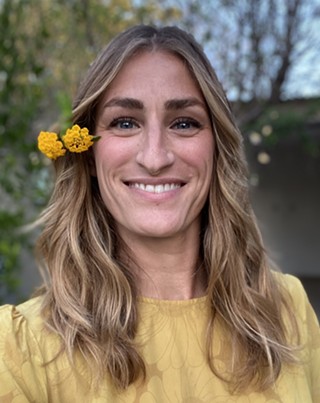Throughout his 20s, David Maisel was caught in a love triangle with architecture and art. While assisting his Princeton art professor Emmet Gowin on a photography project at the volcano Mount St. Helens, Maisel found the perfect solution to his internal lovers' quarrel—aerial photography.
Leaving behind the view cameras and the tripods, he climbed into a Cessna to capture the scene from above. "Aerial work is the antithesis of static photography. You are always in motion; everything is shifting—I loved that immediacy," Maisel says. "Also because of my training in architecture looking down on things in a plane, from the bird's-eye view, made sense to me."
Inspired by sculptor Robert Smithson (1938-1973), Maisel turned his focus on landscapes impacted by human activity. Soon after his trip to Mount St. Helens, Maisel was jetting off to photograph sand quarries along the Delaware River and coal mines in Pennsylvania, funded by a NEA grant. "Aerial photography has been a really important way to show places hidden from normal day-to-day view, places that we don't really understand as being part of American landscape," he says.
That said, Maisel is careful not to classify himself a documentary photographer. "I don't know how objective these pictures are; that's not really their primary purpose," he says. "They are aesthetic responses to sites that are damaged. I think it's more of a collective portrait of where we are as a society. We are all complicit."
The Fall (Borox 2) is less a study of environmental demise than it is an exercise in pure abstraction. The aerial photo is of a region in Spain where the soil, laden with the mineral borax, takes on a metallic color palette aura. "The fields that have been harvested are this golden color, which contrasts with this ashy silvery graphite color of the surrounding land. The contemporary activity of agriculture is interlaced with ancient geologic activity which turns the soil that color," Maisel says. "There is something so complex about shapes and forms—it's like a Cubist landscape. I totally fell in love with that place."
Maisel's visually arresting photography has been exhibited in the US and internationally, from the National Gallery of Art in Washington, DC, to the Carré d'Art in France. He's also published five books of photography, including History's Shadow (2011) and Black Maps (2013). "The beauty and horror are interlinked for me. Beauty is kind of a tool—a device that helps activate our attention span," he says. "I want to make an image that has staying power, in your mind's eye, so that you get to have an aesthetic response to it. I'm all for beauty. " After a moment's reflection he adds, "But maybe it's a bit of a trap too."
A selection of Maisel's work will be displayed at Rockland Center for the Arts beginning later this month as part of the exhibition, "The Tipping Point: Artists Address Climate Change." The show is on display March 25 through May 25, with an opening reception on March 25 from 1 to 4pm. A panel discussion on climate change with thought leaders from science, art and the humanities will take place on May 12. (845) 358- 0877.













